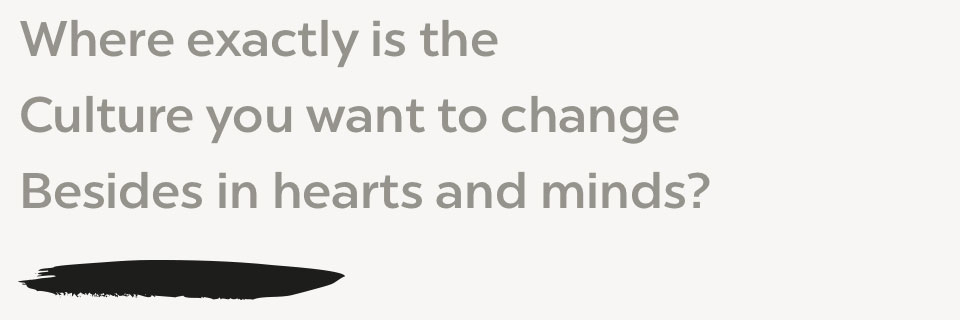Last week in my newsletter, I told a crazy story about egg counting, and it prompted a former client (let’s call him “George”) to get in touch with me.
He called me late in the evening, eager to talk about a project he wanted me to work on.
“So I started thinking,” he said. “How many of my employees are just counting eggs?”
George had recently returned from traveling the world for over a year. He had entrusted his business to his most loyal and capable people, but when he got back he found that revenue was down and expenses were up.
“They made big mistakes when I wasn’t looking.” It’s a sad statement that I hear all the time from my clients.
He knew he needed to fix his engagement problems, and he wanted to fix them fast, so he had paid for some conventional management consulting. You know, the type of wisdom aimed at people who want dramatic change fast—it’s a big market.
They told him he needed a new org chart. They told him he needed written values. He needed clear job descriptions, a mission statement, a vision, etc. All good things. All things he needed.
But when their contract was over and all these things were put into place, it amounted to a hill of beans. All that work hadn’t made much difference. It usually doesn’t.
George, always a man of action, had decided his next step should be to fly me 5,000 miles to help fix his problem. I was flattered, but more curious.
“Fix what, exactly?” I asked.
“My company. We’re on the verge of doing great things. I need you to come and tell everyone what their job is.”
“Why can’t you do that?” I asked, innocently. George laughed. He didn’t know what the real problem was. People usually don’t, that’s why problems stay unsolved.
He knew the tools weren’t working, but at the same time, he knew they were important. He was right, but the solution wasn’t to have me me reiterating job descriptions to his employees.
“What happens when people don’t do their jobs?” I followed my curiosity.
“Other people step in and do it for them and talk behind their backs, and if it continues long enough, they get fired,” he answered. You’d be amazed how common this is.
“Do they get a chance to use feedback to change?” I asked.
“Rarely,” he said.
“So the expectation is that all they should need is the job description to perform well? How’s that working?” The coach’s favorite question.
“It’s not, obviously. What am I missing?”
George is a master technician and mechanical problem solver. He has an incredibly sharp and quick mind, but these abilities worked against him here. He needed to venture into an intangible realm that he’s been unconsciously avoiding his entire life. Time to steer him toward it.
I asked, “What do you think Life is trying to teach you through the challenges you’re facing?”
There was a long, frustrated pause before he admitted, “I don’t know.”
He didn’t know because he hadn’t been engaging with the problems from a place of inner-learning—only a place of outer-fixing.
It’s often said that leadership is more about who you are than what you do, so doesn’t it stand to reason that real business change comes from the inside?
All those very important management tools only address half of the disengagement equation. When you implement them without working on the root issues, it’s like sharpening one side of a blade, but not the other.
What’s the other side? In this case, it’s a combination: a clear method of accountability, a culture of responsibility and ownership, and engaged employee self-interest.
We all try the comfortable part of the solution, sharpening the easy side of the blade.
We look at “successful” people from across the room, try to discern what they’re doing, then do that. Sure enough, those people are using tried and true management tools.
But here’s the part we don’t often get: to the untrained eye, the Tai Chi master appears to make the same movement as the aging dilettante in the park who does it for exercise. But only the master can send you flying across the room with that movement. The difference is on the inside. It’s hard-won, and invisible to anyone who has not walked the path. Can you tell the difference between real martial artists in film and the ones who got the crash choreography course on the set? Not unless you’re a martial artist yourself.
So my question for George (and for you!) is this:
“Who do you need to become so your problems disappear?”
When you gain enough experience to realize that outside fixes cause you to repeat your mistakes, you’ll eventually decide to take the path less traveled. Wanna get started on that path sooner rather than later?
This is what Clear and Open Members do together. You can join George and others who have stopped spinning their wheels. They’ve chosen to embrace the discomfort that changes them, from the inside out, and shows them the true solutions to their problems.


